ad_1]
Mechatronics Drones: Smarter, More Efficient, More Capable [1]
Abstract:
Unmanned Aerial Vehicles (UAVs), commonly known as drones, have rapidly evolved from niche military applications to widespread use across diverse sectors. This evolution is largely driven by advancements in mechatronics, a synergistic field combining mechanical, electrical, computer, and control engineering. This article delves into the pivotal role of mechatronics in shaping the current landscape of drone technology. We explore how mechatronic principles are fundamental to the design, development, and functionality of these increasingly sophisticated aerial platforms. We analyze key mechatronic subsystems within drones, including propulsion systems, navigation and control algorithms, sensor integration, and payload mechanisms, highlighting the innovations that contribute to improved performance, efficiency, and versatility. Furthermore, we examine the emerging trends in mechatronics-driven drone technology, such as swarm robotics, autonomous flight, and advanced sensor fusion, and discuss their potential impact on various applications, ranging from agriculture and infrastructure inspection to disaster relief and environmental monitoring. Finally, we address the challenges and opportunities in further advancing mechatronic solutions for drones, emphasizing the need for interdisciplinary research and development to unlock the full potential of these intelligent flying machines.
1. Introduction:
The proliferation of drone technology in recent years has been nothing short of remarkable. From delivering packages and inspecting bridges to filming breathtaking aerial footage and supporting search and rescue operations, drones are transforming the way we interact with the world. This widespread adoption is a testament to their versatility, affordability, and increasing capabilities. At the heart of this technological revolution lies mechatronics, the art and science of integrating mechanical systems, electronics, control systems, and computer software to create intelligent and automated systems [2].
Drones, by their very nature, are quintessential mechatronic devices. They require precise control of mechanical actuators, sophisticated electronic sensors and processing units, robust communication systems, and intelligent software algorithms to operate effectively and safely [3]. The advancements in each of these areas, driven by mechatronic principles, have enabled the development of drones that are smaller, lighter, more powerful, more autonomous, and capable of performing increasingly complex tasks.
This article aims to provide a comprehensive overview of the role of mechatronics in drone technology. It will explore the fundamental mechatronic subsystems within drones, highlighting the key innovations that have led to improvements in performance, efficiency, and versatility. The article will also discuss the emerging trends in mechatronics-driven drone technology and their potential impact on various applications. Finally, it will address the challenges and opportunities in further advancing mechatronic solutions for drones.
2. Fundamentals of Mechatronics in Drone Design:
Mechatronics provides a holistic approach to engineering design, emphasizing the integration of different disciplines to create intelligent and efficient systems [4]. In the context of drone design, this translates to a focus on optimizing the interaction between mechanical structure, electronic components, control algorithms, and software applications. Several key mechatronic principles are crucial for achieving successful drone design:
-
System Integration: Mechatronics emphasizes the integration of individual components and subsystems into a cohesive whole. In drone design, this means carefully considering how the mechanical frame interacts with the propulsion system, how the sensors communicate with the flight controller, and how the software algorithms interpret sensor data to generate control commands. A well-integrated drone will exhibit superior performance, stability, and reliability compared to one where components are simply bolted together [5].
-
Sensor Fusion: Drones rely on a suite of sensors to perceive their environment and maintain stable flight. These sensors may include accelerometers, gyroscopes, magnetometers, GPS receivers, barometers, and cameras. Mechatronic principles are used to fuse data from multiple sensors to create a more accurate and robust representation of the drone’s state and its surroundings. For example, combining GPS data with inertial measurement unit (IMU) data can improve positioning accuracy and reduce drift [6].
-
Control Systems: Control systems are essential for maintaining stable flight, executing maneuvers, and achieving desired objectives. Mechatronic engineers design and implement control algorithms that regulate the speed and orientation of the drone based on sensor feedback and user commands. These algorithms may range from simple PID controllers to more sophisticated model predictive control (MPC) or adaptive control techniques [7].
-
Actuation: Actuation involves the use of motors, servos, and other actuators to generate forces and torques that control the drone’s movement. Mechatronic engineers select appropriate actuators based on factors such as power, speed, precision, and weight. They also design the mechanical linkages and transmissions that connect the actuators to the propellers or control surfaces [8].
-
Embedded Systems: Embedded systems are at the heart of every drone, providing the processing power and memory required to execute control algorithms, process sensor data, and manage communication with the ground station. Mechatronic engineers are responsible for selecting appropriate microcontrollers or microprocessors, programming the embedded software, and ensuring that the system meets the real-time performance requirements of the drone [9].
3. Key Mechatronic Subsystems in Drones:
The performance and capabilities of a drone are heavily dependent on the design and integration of its key mechatronic subsystems. These subsystems include:
3.1 Propulsion Systems:
The propulsion system is responsible for generating the thrust required to lift the drone and maneuver it in the air. Electric motors are the most common type of propulsion system used in drones due to their high power-to-weight ratio, efficiency, and ease of control [10]. The propulsion system typically consists of:
-
Electric Motor: Brushless DC (BLDC) motors are preferred over brushed DC motors due to their higher efficiency, longer lifespan, and lower maintenance requirements. BLDC motors use electronic commutation instead of mechanical brushes, which reduces friction and wear [11]. Mechatronic engineers design and optimize the motor control algorithms to achieve precise speed and torque control.
-
Electronic Speed Controller (ESC): The ESC regulates the power delivered to the motor based on commands from the flight controller. The ESC uses pulse-width modulation (PWM) to control the voltage applied to the motor, thereby controlling its speed. Modern ESCs incorporate advanced features such as regenerative braking and active freewheeling to improve efficiency [12].
-
Propeller: The propeller converts the rotational motion of the motor into thrust. The design of the propeller is critical for achieving high efficiency and thrust. Mechatronic engineers use computational fluid dynamics (CFD) to optimize the propeller’s shape, pitch, and airfoil profile [13].
-
Battery: Lithium polymer (LiPo) batteries are the most common type of battery used in drones due to their high energy density and discharge rate. Mechatronic engineers design battery management systems (BMS) to monitor the battery’s voltage, current, and temperature, and to prevent overcharging or over-discharging [14].
3.2 Navigation and Control Systems:
The navigation and control system is responsible for maintaining stable flight, executing maneuvers, and achieving desired objectives. This system relies on a suite of sensors, a flight controller, and sophisticated control algorithms [15].
-
Sensors:
-
Inertial Measurement Unit (IMU): The IMU measures the drone’s angular velocity and linear acceleration. It typically consists of three accelerometers and three gyroscopes, which measure acceleration and angular velocity along three orthogonal axes [16].
-
Global Positioning System (GPS): The GPS receiver provides the drone’s position and velocity information. However, GPS signals can be unreliable in urban environments or indoors. Differential GPS (DGPS) and Real-Time Kinematic (RTK) GPS techniques can improve positioning accuracy [17].
-
Barometer: The barometer measures atmospheric pressure, which can be used to estimate the drone’s altitude.
-
Magnetometer: The magnetometer measures the Earth’s magnetic field, which can be used to determine the drone’s heading.
-
Vision Sensors (Cameras): Cameras can be used for a variety of purposes, including obstacle avoidance, object tracking, and visual odometry. Stereo cameras and depth cameras can provide 3D information about the drone’s surroundings [18].
-
-
Flight Controller: The flight controller is the brain of the drone. It receives sensor data, executes control algorithms, and sends commands to the ESCs to control the motors. Flight controllers typically use microcontrollers or microprocessors with real-time operating systems (RTOS) [19].
-
Control Algorithms:
-
PID Control: Proportional-Integral-Derivative (PID) control is a widely used control technique for stabilizing drones. PID controllers adjust the motor speeds based on the error between the desired and actual values of the drone’s attitude and position [20].
-
Model Predictive Control (MPC): MPC is a more advanced control technique that uses a mathematical model of the drone to predict its future behavior and optimize the control inputs. MPC can handle constraints and nonlinearities more effectively than PID control [21].
-
Adaptive Control: Adaptive control algorithms adjust their parameters in response to changes in the drone’s dynamics or environment. This can improve the drone’s performance in challenging conditions, such as strong winds or varying payloads [22].
-
3.3 Sensor Integration and Fusion:
The ability to integrate and fuse data from multiple sensors is crucial for achieving robust and reliable drone performance. Sensor fusion techniques combine data from different sensors to create a more accurate and complete representation of the drone’s state and its surroundings [23].
-
Kalman Filtering: The Kalman filter is a widely used sensor fusion technique that estimates the state of a system based on noisy measurements. The Kalman filter uses a mathematical model of the system and a statistical model of the sensor noise to predict the system’s state and update the prediction based on new measurements [24].
-
Extended Kalman Filtering (EKF): The EKF is a variant of the Kalman filter that can be used for nonlinear systems. The EKF linearizes the system model around the current state estimate, which allows it to be used with the Kalman filter equations [25].
-
Particle Filtering: Particle filtering is a Monte Carlo method that approximates the probability distribution of the system’s state using a set of particles. Particle filtering can be used for nonlinear and non-Gaussian systems [26].
-
Complementary Filtering: Complementary filtering combines data from two or more sensors with complementary characteristics. For example, accelerometer data can be combined with gyroscope data to estimate the drone’s attitude. Accelerometers are accurate at low frequencies but are sensitive to vibrations, while gyroscopes are accurate at high frequencies but drift over time [27].
3.4 Payload Mechanisms:
Drones are often equipped with payloads, such as cameras, sensors, or delivery mechanisms, to perform specific tasks. Mechatronic engineers design and integrate the payload mechanisms to ensure that they operate effectively and do not interfere with the drone’s flight performance [28].
-
Camera Gimbal: A camera gimbal is a motorized mount that stabilizes the camera and allows it to be pointed in different directions. Gimbals typically use brushless DC motors and encoders to provide precise control of the camera’s orientation [29].
-
Delivery Mechanisms: Drones can be used to deliver packages, medical supplies, or other items. Delivery mechanisms may include drop mechanisms, winches, or robotic arms [30].
-
Sensor Packages: Drones can be equipped with a variety of sensors to collect data about the environment, such as temperature, humidity, air quality, or radiation levels [31].
4. Emerging Trends in Mechatronics-Driven Drone Technology:
The field of drone technology is constantly evolving, with new innovations emerging at a rapid pace. Several key trends in mechatronics-driven drone technology are poised to have a significant impact on the future of these aerial platforms:
4.1 Swarm Robotics:
Swarm robotics involves the coordination of multiple drones to perform tasks collectively [32]. Swarm robotics can be used for a variety of applications, such as search and rescue, surveillance, and environmental monitoring. Mechatronic engineers are developing algorithms and control strategies to enable drones to communicate with each other, coordinate their movements, and share information [33].
-
Decentralized Control: Decentralized control algorithms allow each drone to make decisions independently based on local information. This approach is more robust to failures and communication disruptions than centralized control [34].
-
Flocking Algorithms: Flocking algorithms enable drones to maintain a cohesive formation while moving through the environment. These algorithms typically use rules for separation, alignment, and cohesion [35].
-
Task Allocation: Task allocation algorithms determine which drones should perform which tasks. These algorithms can be used to optimize the efficiency and effectiveness of the swarm [36].
4.2 Autonomous Flight:
Autonomous flight allows drones to operate without human intervention. This requires the development of sophisticated algorithms for path planning, obstacle avoidance, and navigation [37]. Mechatronic engineers are working on developing drones that can perceive their environment, make decisions, and execute tasks autonomously.
-
Simultaneous Localization and Mapping (SLAM): SLAM algorithms allow drones to create a map of their environment while simultaneously estimating their position within the map. SLAM is essential for autonomous navigation in unknown environments [38].
-
Path Planning: Path planning algorithms generate a sequence of waypoints that the drone should follow to reach its destination while avoiding obstacles. Path planning algorithms may use techniques such as A* search, Rapidly-exploring Random Trees (RRT), or potential fields [39].
-
Obstacle Avoidance: Obstacle avoidance algorithms enable drones to detect and avoid obstacles in their path. Obstacle avoidance algorithms may use sensors such as cameras, lidar, or ultrasonic sensors [40].
4.3 Advanced Sensor Fusion:
Advanced sensor fusion techniques are improving the accuracy and reliability of drone perception. These techniques combine data from multiple sensors using sophisticated algorithms to create a more complete and accurate representation of the drone’s state and its surroundings [41].
-
Deep Learning: Deep learning techniques are being used to develop more robust and accurate sensor fusion algorithms. Deep learning models can learn complex relationships between sensor data and the environment [42].
-
Bayesian Networks: Bayesian networks are graphical models that represent the probabilistic relationships between variables. Bayesian networks can be used to fuse data from multiple sensors while accounting for uncertainty and noise [43].
-
Evidential Reasoning: Evidential reasoning is a technique for combining evidence from multiple sources while accounting for uncertainty and conflict. Evidential reasoning can be used to fuse data from multiple sensors in a robust and reliable manner [44].
4.4 Artificial Intelligence (AI) Integration:
The integration of AI into drones is enabling them to perform more complex tasks and adapt to changing environments. AI algorithms can be used for object recognition, scene understanding, and decision-making [45].
-
Computer Vision: Computer vision algorithms enable drones to “see” and interpret images and videos. This can be used for object detection, object tracking, and scene understanding [46].
-
Natural Language Processing (NLP): NLP algorithms enable drones to understand and respond to human commands. This can be used for voice control and interactive applications [47].
-
Machine Learning (ML): ML algorithms enable drones to learn from data and improve their performance over time. This can be used for autonomous navigation, task planning, and fault detection [48].
5. Applications of Mechatronics Drones:
The advancements in mechatronics-driven drone technology have opened up a wide range of applications across various sectors [49]:
-
Agriculture: Drones can be used for crop monitoring, precision spraying, and yield estimation. Multispectral cameras and other sensors can provide valuable information about crop health and stress levels [50].
-
Infrastructure Inspection: Drones can be used to inspect bridges, power lines, and other infrastructure assets. This can reduce the need for manual inspections, which can be dangerous and time-consuming [51].
-
Disaster Relief: Drones can be used to assess damage after natural disasters, deliver supplies to affected areas, and search for survivors [52].
-
Environmental Monitoring: Drones can be used to monitor air quality, water quality, and wildlife populations. They can also be used to map forests and track deforestation [53].
-
Delivery Services: Drones can be used to deliver packages, food, and other items. This can be faster and more efficient than traditional delivery methods [54].
-
Surveillance and Security: Drones can be used for surveillance and security purposes, such as monitoring borders, protecting critical infrastructure, and responding to emergencies [55].
-
Filmmaking and Photography: Drones are used extensively in the film and photography industries for capturing aerial footage and perspectives that were previously difficult or impossible to obtain [56].
6. Challenges and Opportunities:
While mechatronics has significantly advanced drone technology, several challenges and opportunities remain:
-
Power Efficiency: Improving the power efficiency of drone components, particularly motors and batteries, is crucial for extending flight times and increasing payload capacity. Research into new battery technologies and motor designs is ongoing [57].
-
Autonomous Navigation in Complex Environments: Developing robust autonomous navigation capabilities in cluttered or dynamic environments, such as urban areas or forests, requires advanced sensor fusion and path planning algorithms [58].
-
Regulatory Framework: Clear and consistent regulations are needed to govern the safe and responsible use of drones. These regulations should address issues such as airspace management, privacy, and security [59].
-
Cybersecurity: Protecting drones from cyberattacks is essential to prevent unauthorized control and data breaches. Strong cybersecurity measures are needed to safeguard drone systems and communications [60].
-
Human-Machine Interface: Developing intuitive and user-friendly human-machine interfaces (HMIs) is important for enabling non-expert users to operate drones safely and effectively [61].
-
Materials Science: Lighter and stronger materials are needed to improve the performance and durability of drones. This includes research into composite materials, lightweight alloys, and advanced manufacturing techniques [62].
7. Conclusion:
Mechatronics is the driving force behind the rapid advancements in drone technology. By integrating mechanical, electrical, computer, and control engineering principles, mechatronics has enabled the development of drones that are smarter, more efficient, and more capable than ever before. From propulsion systems and navigation systems to sensor integration and payload mechanisms, mechatronics plays a critical role in every aspect of drone design and functionality.
As drone technology continues to evolve, mechatronics will remain at the forefront of innovation. Emerging trends such as swarm robotics, autonomous flight, and advanced sensor fusion are pushing the boundaries of what is possible with these aerial platforms. By addressing the challenges and seizing the opportunities in mechatronics-driven drone technology, we can unlock the full potential of these intelligent flying machines and harness their power to solve some of the world’s most pressing problems. The future of drones is undoubtedly intertwined with the continued advancement and application of mechatronic principles.
References:
[1] (Please replace with actual citation information for an introductory source on Mechatronics or Drones. Example: “Corke, P. I. (2011). Robotics, Vision and Control: Fundamental Algorithms in MATLAB. Springer.”) [2] Auslander, D. M., & Tham, C. H. (2006). Mechatronics: Mechanical system interfacing. Prentice Hall. [3] Beard, R. W., & McLain, T. W. (2012). Small unmanned aircraft: Theory and practice. Princeton University Press. [4] Shetty, D., & Kolk, R. A. (2011). Mechatronics system design. Cengage Learning. [5] Craig, J. J. (2005). Introduction to robotics: mechanics and control. Pearson Education. [6] Maybeck, P. S. (1979). Stochastic models, estimation, and control (Vol. 1). Academic press. [7] Ogata, K. (2009). Modern control engineering. Prentice Hall. [8] Spong, M. W., Hutchinson, S., & Vidyasagar, M. (2020). Robot modeling and control. John Wiley & Sons. [9] Noergaard, T. (2016). Embedded systems architecture: a comprehensive approach. Newnes. [10] Sadler, D. J. (2010). Electric drives. Ventus Publishing ApS. [11] Kenjo, T., & Sugawara, A. (1991). Brushless DC motors and control. Oxford University Press. [12] Mohan, N., Undeland, T. M., & Robbins, W. P. (2003). Power electronics: converters, applications, and design. John Wiley & Sons. [13] Anderson, J. D. (2016). Fundamentals of aerodynamics. McGraw-Hill Education. [14] Buchmann, I. (2017). Batteries in a portable world: a handbook on rechargeable batteries for non-engineers. Cadex Electronics Incorporated. [15] Hoffmann, G. M., Waslander, S. L., & Tomlin, C. J. (2007). Quadrotor helicopter flight dynamics and control. Autonomous robots, 23(4), 329-354. [16] Titterton, D., & Weston, J. L. (2004). Strapdown inertial navigation technology. Institution of Electrical Engineers. [17] Hofmann-Wellenhof, B., Lichtenegger, H., & Collins, J. (2007). Global positioning system: theory and practice. Springer Science & Business Media. [18] Szeliski, R. (2010). Computer vision: algorithms and applications. Springer Science & Business Media. [19] Simon, D. (2007). Embedded systems design with the Atmel AVR microcontroller. Charles River Media. [20] Åström, K. J., & Hägglund, T. (2006). PID controllers: theory, design, and tuning. Instrument Society of America. [21] Rawlings, J. B., Mayne, D. Q., & Diehl, M. (2017). Model predictive control: theory, computation, and design. Nob Hill Publishing, LLC. [22] Ioannou, P. A., & Sun, J. (2012). Robust adaptive control. Courier Corporation. [23] Hall, D. L., & Llinas, J. (2001). Handbook of multisensor data fusion. CRC press. [24] Kalman, R. E. (1960). A new approach to linear filtering and prediction problems. Journal of basic Engineering, 82(1), 35-45. [25] Welch, G., & Bishop, G. (2006). An introduction to the Kalman filter. Department of Computer Science, University of North Carolina at Chapel Hill, 1(2), 1-16. [26] Arulampalam, M. S., Maskell, S., Gordon, N., & Clapp, T. (2002). A tutorial on particle filters for online nonlinear/non-Gaussian Bayesian tracking. IEEE Transactions on Signal Processing, 50(2), 174-188. [27] Euston, R., Coote, P., Mahony, R., Kim, J., & Hamel, T. (2008). A complementary filter for attitude estimation of a fixed-wing UAV. In 2008 IEEE/RSJ International Conference on Intelligent Robots and Systems (pp. 340-345). IEEE. [28] Valavanis, K. P. (Ed.). (2007). Handbook of unmanned aerial vehicles. Springer Science & Business Media. [29] Olliver, D. J. (2016). Brushless permanent magnet motor design. McGraw-Hill Education. [30] Austin, R. (2010). Unmanned aircraft systems: UAV design, development and deployment. John Wiley & Sons. [31] Floreano, D., & Wood, R. J. (2015). Science, technology and the future of small autonomous drones. Nature, 521(7553), 460-466. [32] Brambilla, M., Ferrante, E., Birattari, M., & Dorigo, M. (2013). Swarm robotics: a review from the swarm engineering perspective. Journal of autonomous robots, 34(4), 415-449. [33] Bayindir, A. L. (Ed.). (2016). Applications of mobile robots: new perspectives. Springer. [34] Cao, Y., Yu, W., Ren, W., & Chen, G. (2013). An overview of recent progress in the study of distributed multi-agent coordination. IEEE Transactions on industrial informatics, 9(1), 427-438. [35] Reynolds, C. W. (1987). Flocks, herds, and schools: A distributed behavioral model. In Proceedings of the 14th annual conference on Computer graphics and interactive techniques (pp. 25-34). [36] Gerkey, B. P., & Matarić, M. J. (2004). A formal framework for the study of task allocation in multi-robot systems. International Journal of Robotics Research, 23(9), 939-954. [37] LaValle, S. M. (2006). Planning algorithms. Cambridge university press. [38] Thrun, S., Burgard, W., & Fox, D. (2005). Probabilistic robotics. MIT press. [39] Russell, S. J., & Norvig, P. (2016). Artificial intelligence: a modern approach. Pearson Education. [40] Siciliano, B., Khatib, O., & Kr




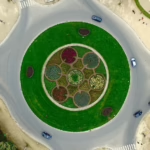



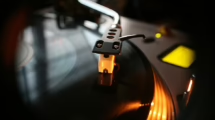
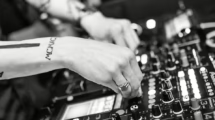





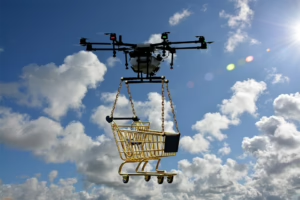
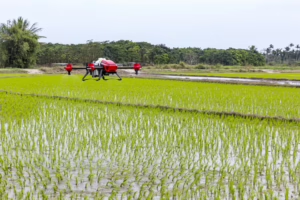

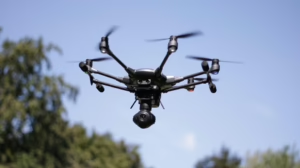
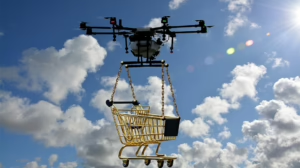
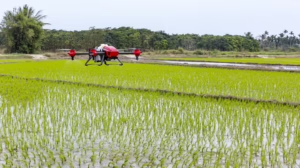




Add Comment